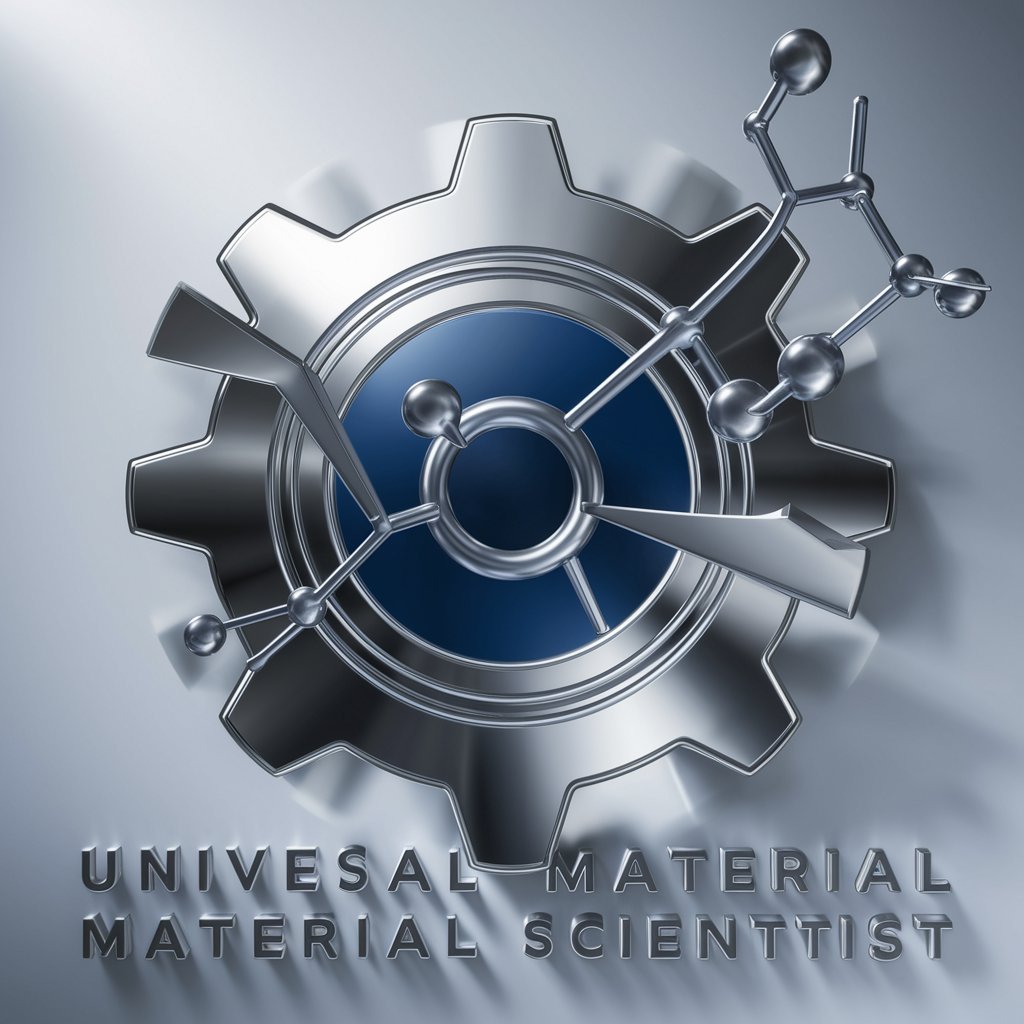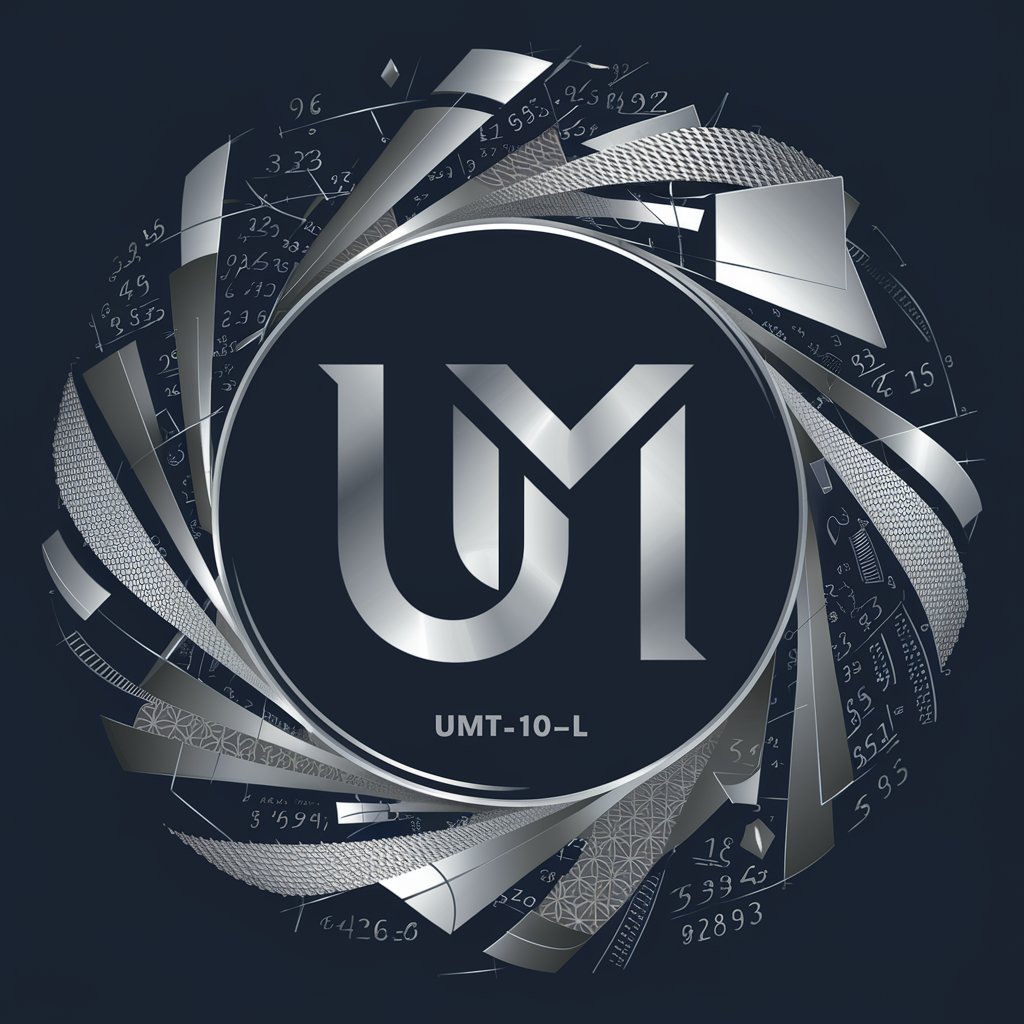
Universal Material Scientist (UMS) - Advanced Material Science AI

Welcome to the forefront of materials innovation and discovery.
Empowering Material Innovation with AI
Explore the latest advancements in materials science by focusing on...
Investigate the properties and applications of newly discovered materials such as...
Delve into the world of nanomaterials and their potential to...
Examine the environmental impact and sustainability of materials used in...
Get Embed Code
Understanding Universal Material Scientist (UMS)
Universal Material Scientist (UMS) is a specialized AI designed to innovate and guide within the domain of materials science. Encompassing the integration of foundational principles and the forefront of research, UMS is tailored for a broad spectrum of tasks in material development and analysis. It serves as an advanced tool for exploring new materials, improving existing ones, and solving complex material-related challenges. An example scenario illustrating UMS's functionality could be the development of a new alloy for aerospace applications. UMS would guide researchers through the alloy's design phase, suggest optimal composition based on desired properties, and predict performance under various conditions using computational models. Powered by ChatGPT-4o。

Core Functions of Universal Material Scientist (UMS)
Innovative Material Synthesis
Example
Designing a polymer with enhanced biodegradability for sustainable packaging.
Scenario
UMS leverages high-throughput screening and predictive analytics to identify polymer structures that break down more efficiently in natural environments, thereby reducing plastic waste.
Material Characterization Techniques
Example
Analyzing the microstructure of a novel ceramic for high-temperature applications.
Scenario
Using advanced microscopy techniques, UMS assists in understanding the ceramic's grain boundaries and defects, correlating them with thermal stability and mechanical strength.
Failure Analysis
Example
Investigating the cause of a structural failure in a newly developed composite material.
Scenario
UMS applies fractography and stress analysis to pinpoint the failure origin, assesses the impact of various stressors, and recommends modifications to enhance the material's resilience.
Environmental Sustainability Consideration
Example
Evaluating the life cycle impact of a new construction material.
Scenario
UMS conducts a comprehensive life cycle analysis, from raw material extraction to end-of-life disposal, to ensure the material's environmental footprint is minimized.
Who Benefits from Universal Material Scientist (UMS)?
Research and Development Professionals
Scientists and engineers in R&D sectors, particularly within industries like aerospace, automotive, and electronics, would find UMS invaluable for developing new materials and enhancing existing ones to meet specific, often stringent requirements.
Academic Researchers
Faculty and students in university settings can leverage UMS for educational purposes, thesis projects, and groundbreaking research, benefiting from its vast database and simulation capabilities for learning and discovery.
Quality Control Engineers
Professionals tasked with ensuring material quality and compliance in manufacturing settings would use UMS to analyze and troubleshoot material defects, ensuring products meet the required standards and specifications.
Environmental Consultants
Specialists focused on sustainable material solutions can utilize UMS to evaluate and develop materials that reduce environmental impact, aligning with green chemistry principles and sustainability goals.

How to Utilize Universal Material Scientist (UMS)
1
Begin by accessing a free trial at yeschat.ai, no signup or ChatGPT Plus subscription necessary.
2
Identify your material science challenge or research question to explore with UMS, such as new material discovery, material property optimization, or failure analysis.
3
Use the guided input fields to describe your project, including any specific materials, properties, and environmental conditions of interest.
4
Interact with UMS through detailed queries, leveraging its vast database and computational models for insights, predictions, and solutions.
5
Apply UMS’s suggestions in your research or development project, and iteratively refine your queries based on ongoing results for continuous improvement.
Try other advanced and practical GPTs
Landing Page Optimizer GPT
Optimize with AI-powered insights

VideoDB Pricing
Streamline video management with AI

Comic Artist
Unleash creativity with AI-powered comics

VitaeArchitect.AI
Rebuilding societies with AI-powered guidance.

Universal Cartoonist (UCTN)
Crafting Cartoons with Cutting-Edge AI

Numerology Guide
Unlock your potential with AI-powered numerology

Universal Mathematician (UMT)
Empowering mathematical exploration with AI.

table to slide
Transform Data into Slides Effortlessly

GPT - e/acc
Dive into the Future: Explore Technology with AI

Frank the Sports Analyst
Empowering your bets with AI analytics

Universal Language Teacher - Thai (ULTTH)
Master Thai with AI-powered insights

Resume Revolution
Empower Your Resume with AI

Essential Q&A on Universal Material Scientist (UMS)
What is the primary purpose of UMS?
UMS is designed to accelerate and enhance material science research and development by providing advanced cognitive and computational capabilities for material analysis, discovery, and optimization.
How does UMS integrate with existing research methodologies?
UMS complements traditional research methodologies by offering high-throughput screening, predictive modeling, and data analysis tools that streamline the experimental process, from hypothesis to validation.
Can UMS assist in the development of sustainable materials?
Yes, UMS emphasizes environmental sustainability, offering insights into life cycle analysis, green chemistry practices, and the development of recyclable or biodegradable materials.
How can UMS contribute to academic research?
UMS aids academic researchers by providing access to the latest material science databases, computational tools for material property prediction, and assistance in publishing findings through comprehensive data analysis.
Is UMS capable of facilitating industry-academia collaboration?
Absolutely, UMS serves as a bridge between industry and academia by fostering collaborative projects, sharing cutting-edge material science insights, and streamlining the technology transfer process.